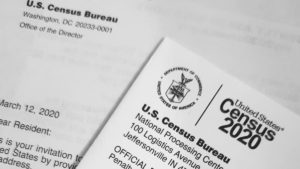Resource Center
Stay up-to-date with Synergos Technologies’s current blog, news, white papers, success stories, and more!

The Quantum Customer
The Quantum Customer The Quantum Customer The Quantum Customer: Why Pinning Them Down Might Make You Wrong Let’s play a little thought experiment. In quantum

The Predictable Pulse of Community
The Predictable Pulse of Community The Predictable Pulse of Community If you’ve ever seen a flock of starlings swirl across the sky, or smoke trace

Housing Affordability in a Shifting Economy
Housing Affordability in a Shifting Economy Housing Affordability in a Shifting Economy Our STI Market Reports give decision-makers more than just housing prices—they reveal

Aged Markets in Focus
Aged Markets in Focus Aged Markets in Focus This week we’re examining three aged communities with a high proportion of Social Security recipients:

Mexico’s Labor Force Participation 2023
Mexico’s Heartbeat – 2023 Understanding labor force participation in Mexico Mexico’s Heartbeat – 2023 Understanding labor force participation in Mexico. We’re entering our second year

Top 29 Market Report
Top 29 Market Report – 2023 Exploring the top 29 markets experiencing the most growth in the US. Top 29 Market Report Exploring the top
Resource Center
Stay up-to-date with Synergos Technologies’s current blog, news, white papers, success stories, and more!
Resource Center Categories

The Quantum Customer
The Quantum Customer The Quantum Customer The Quantum Customer: Why Pinning Them Down Might Make You Wrong Let’s play a little thought experiment. In quantum

The Predictable Pulse of Community
The Predictable Pulse of Community The Predictable Pulse of Community If you’ve ever seen a flock of starlings swirl across the sky, or smoke trace

Housing Affordability in a Shifting Economy
Housing Affordability in a Shifting Economy Housing Affordability in a Shifting Economy Our STI Market Reports give decision-makers more than just housing prices—they reveal

Aged Markets in Focus
Aged Markets in Focus Aged Markets in Focus This week we’re examining three aged communities with a high proportion of Social Security recipients:

Mexico’s Labor Force Participation 2023
Mexico’s Heartbeat – 2023 Understanding labor force participation in Mexico Mexico’s Heartbeat – 2023 Understanding labor force participation in Mexico. We’re entering our second year

Top 29 Market Report
Top 29 Market Report – 2023 Exploring the top 29 markets experiencing the most growth in the US. Top 29 Market Report Exploring the top

Demographic Collapse?
Are We Headed Towards a Demographic Collapse? The rapid decline in birth rates globally deserves our attention. Let’s explore how the numbers stack up. Are

The Updated Synergos 2020 Census Plan
What you can expect from Synergos Technologies in 2023, and how we’re dealing with a new Census 2020 release plan.

Average Home Values Since 2007
Average Home Values Since 2007 How has the housing market performed since the 2007 financial crisis? Average Home Values Since 2007 How has the housing

GDP per Capita in Top Growth Markets
GDP per capita in top growth markets like Austin and Boise is either slowly increasing, or has not increased at all.

Lifestyle Segments Fueling Top Growth Markets
We released the top 10 growth markets report earlier in 2021. Now find out which lifestyle segments are fueling that growth using STI: LandScape™.

4 of the 5 Most Active Grocery Retailers Are PopStats Customers – Here’s Why.
4 of the 5 most active grocery retailers by construction activity are using STI: PopStats™. Here’s why we’re their data partner of choice.